
Zanzibar Island: A Tropical Paradise in Tanzania
Experience the enchantment of Zanzibar Island, where pristine beaches, rich history, and vibrant culture come together in a tropical paradise.
Zanzibar Island, also known as Unguja, is a jewel in the Indian Ocean. This island is a blend of rich history, vibrant culture, and stunning natural beauty. When you arrive, the first thing you’ll notice is the pristine white sandy beaches that stretch for miles. The turquoise waters are perfect for snorkeling, diving, and swimming. Stone Town, the historic heart of Zanzibar City, is a UNESCO World Heritage site. Here, you can wander through narrow streets, admire the unique architecture, and visit bustling markets where the aroma of spices fills the air. Zanzibar is also famous for its spice farms. A visit to one of these farms offers a sensory experience like no other. You can see, smell, and taste a variety of spices, such as cloves, nutmeg, and cinnamon. This island is often called the 'Spice Island' because of its long history with the spice trade. For those interested in history, the island has several museums and historic sites, including the former slave market and the Sultan’s Palace. Nature lovers will find plenty to explore on Zanzibar Island. The Jozani Forest is home to the rare red colobus monkey, which can only be found in Zanzibar. This forest is a great place to hike and learn about the island's unique flora and fauna. The surrounding coral reefs provide excellent opportunities for marine exploration, and the warm, clear waters are ideal for water sports. Whether you are looking to relax on the beach, delve into history, or explore nature, Zanzibar Island has something for every traveler.
Local tips in Zanzibar Island
- Visit Stone Town early in the morning to avoid the heat and crowds.
- Carry cash, as many small vendors and local markets do not accept cards.
- Dress modestly when visiting local villages and religious sites to show respect for the local culture.
- Hire a local guide for a spice tour to get the most informative experience.
- Try the local cuisine, especially dishes featuring fresh seafood and spices.
Zanzibar Island: A Tropical Paradise in Tanzania
Zanzibar Island, also known as Unguja, is a jewel in the Indian Ocean. This island is a blend of rich history, vibrant culture, and stunning natural beauty. When you arrive, the first thing you’ll notice is the pristine white sandy beaches that stretch for miles. The turquoise waters are perfect for snorkeling, diving, and swimming. Stone Town, the historic heart of Zanzibar City, is a UNESCO World Heritage site. Here, you can wander through narrow streets, admire the unique architecture, and visit bustling markets where the aroma of spices fills the air. Zanzibar is also famous for its spice farms. A visit to one of these farms offers a sensory experience like no other. You can see, smell, and taste a variety of spices, such as cloves, nutmeg, and cinnamon. This island is often called the 'Spice Island' because of its long history with the spice trade. For those interested in history, the island has several museums and historic sites, including the former slave market and the Sultan’s Palace. Nature lovers will find plenty to explore on Zanzibar Island. The Jozani Forest is home to the rare red colobus monkey, which can only be found in Zanzibar. This forest is a great place to hike and learn about the island's unique flora and fauna. The surrounding coral reefs provide excellent opportunities for marine exploration, and the warm, clear waters are ideal for water sports. Whether you are looking to relax on the beach, delve into history, or explore nature, Zanzibar Island has something for every traveler.
When is the best time to go to Zanzibar Island?
Iconic landmarks you can’t miss
Old Fort
Dive into the rich history and vibrant culture of the Old Fort in Zanzibar, a charming fortress and cultural hub in the heart of Stone Town.

Unguja
Discover the enchanting beauty and rich cultural heritage of Unguja, the largest island of Zanzibar, where stunning beaches meet vibrant local life.
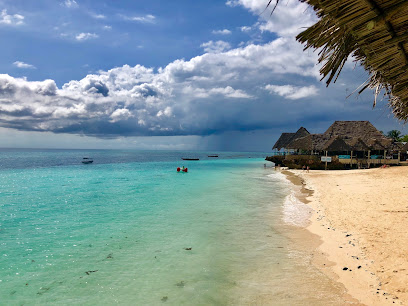
Jozani Forest
Explore the enchanting Jozani Forest, a national reserve in Zanzibar teeming with unique wildlife and breathtaking natural beauty.

Changu Island
Experience the serenity and historical charm of Changu Island, a captivating destination in Tanzania with stunning beaches and vibrant marine life.

Tortoise Sanctuary
Explore the enchanting Tortoise Sanctuary in Zanzibar, where conservation meets adventure and giant tortoises roam freely in a lush paradise.
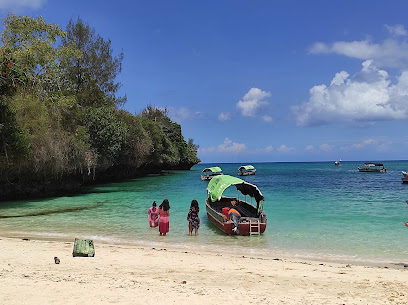
House of Wonders
Explore the House of Wonders in Zanzibar, a museum showcasing the island's rich history and vibrant culture through captivating exhibits.

Mbweni Ruins & Gardens (Jungle Paradise)
Explore the historic Mbweni Ruins & Gardens in Zanzibar, where lush landscapes and rich history create a tranquil oasis for all travelers.
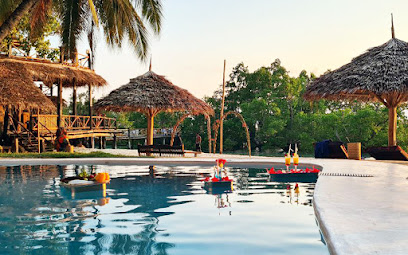
Zanzibar Butterfly Centre
Experience the captivating beauty of the Zanzibar Butterfly Centre, where nature unfolds in vibrant colors and educational wonders await.
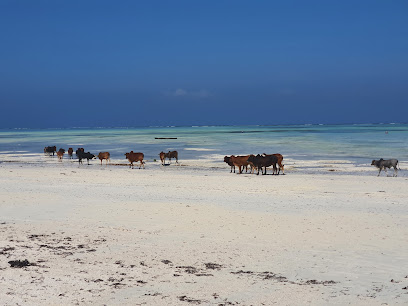
Sandbank at Mnemba island
Experience the pristine sands and crystal-clear waters of Mnemba Island Sandbank, a tropical paradise perfect for relaxation and adventure in Zanzibar.
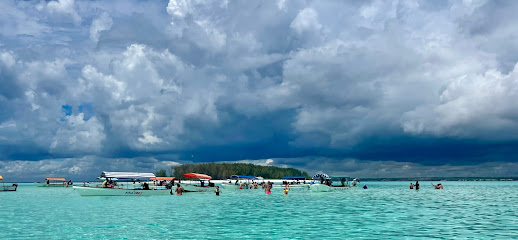
Hamam Persian Baths
Discover relaxation and history at Hamam Persian Baths, a unique blend of culture and wellness in the heart of Zanzibar's Stone Town.

Mangapwani Slave Chamber
Explore the Mangapwani Slave Chamber, a poignant historical landmark in Zanzibar, reflecting on the legacy of the slave trade and its enduring impact.

Maruhubi Historical Sites
Explore the Maruhubi Historical Sites in Zanzibar, where history and natural beauty converge in a serene setting.
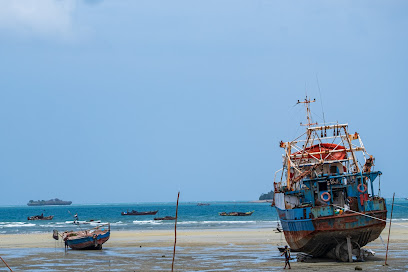
Mtoni Palace Ruins
Uncover the rich history of Zanzibar at the Mtoni Palace Ruins, a serene landmark steeped in royal heritage and stunning coastal views.

Zanzibar Island Tanzania
Experience the tropical beauty and rich cultural heritage of Zanzibar Island, Tanzania's hidden gem with stunning beaches and vibrant history.

Unmissable attractions to see
MAALUM
Explore the tranquil beauty of Maalum Nature Preserve in Paje, Tanzania, where lush landscapes and vibrant ecosystems await every nature lover.

Tortoise Sanctuary
Explore the Tortoise Sanctuary in Zanzibar, a unique animal park dedicated to the conservation of giant tortoises and a peaceful escape into nature.

Swim with turtles sanctuary Zanzibar
Discover the enchanting Swim with Turtles Sanctuary in Nungwi, Zanzibar, where adventure meets conservation in stunning surroundings.
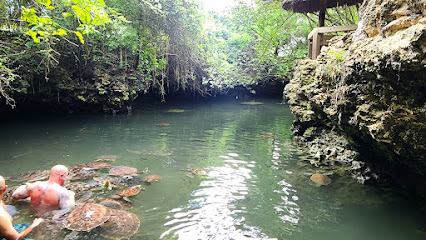
TO THE HILL KIDICHI SPICE FARMS
Discover the fragrant world of spices at Hill Kidichi Spice Farms in Zanzibar, where culture, history, and nature intertwine for a unique experience.

Peace Memorial Museum
Explore the Peace Memorial Museum in Zanzibar, where history and culture intertwine to reveal the island's rich past and heritage.

Old Portuguese Arch
Explore the Old Portuguese Arch, a historical gem in Zanzibar's Stone Town, showcasing rich heritage and stunning architecture.

Jozani-Chwaka Bay National Park
Explore the lush landscapes and unique wildlife of Jozani-Chwaka Bay National Park, Zanzibar's premier destination for nature enthusiasts.

Sandbank at Mnemba island
Explore the pristine beauty of the Sandbank at Mnemba Island, a tropical paradise with stunning coral reefs and vibrant marine life, perfect for relaxation and adventure.

Jaw's Corner
Experience the vibrant culture and rich history of Zanzibar at Jaw's Corner, a lively square in the heart of Stone Town.

Blue Lagoon
Experience the serene beauty and adventure of Blue Lagoon in Dongwe, Tanzania - a tropical paradise that beckons travelers to unwind and explore.

Tazari chameleon Reserve
Explore the enchanting Tazari Chameleon Reserve, a must-visit destination for wildlife enthusiasts and nature lovers in Tanzania.

Fukuchani Ruins & Cave
Discover the rich history and stunning natural beauty at Fukuchani Ruins & Cave, a must-visit attraction for every traveler in Tanzania.

Tom Cruise Tours Zanzibar
Uncover the magic of Zanzibar with Tom Cruise Tours, where breathtaking beaches meet rich culture in a perfect tropical getaway.

Zanzibar Stone Town Heritage Society (ZSTHS)
Uncover the vibrant history and cultural heritage of Zanzibar at the Stone Town Heritage Society, a must-visit for every traveler.

Prison
Discover the haunting history of Changu Island's prison, a pivotal site that reflects Zanzibar's cultural heritage and complex past.

Essential places to dine
The Rock Restaurant Zanzibar
Experience breathtaking ocean views and exquisite seafood at The Rock Restaurant Zanzibar - a culinary treasure perched atop a rocky outcrop.
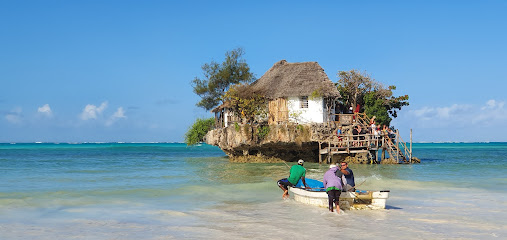
Lukmaan Restaurant
Experience authentic Zanzibari cuisine at Lukmaan Restaurant in Stone Town – where every meal is a flavorful adventure.

Mama Mia
Experience authentic Italian flavors at Mama Mia in Nungwi, Zanzibar—home to delicious pizzas, fresh pasta & heavenly ice cream.
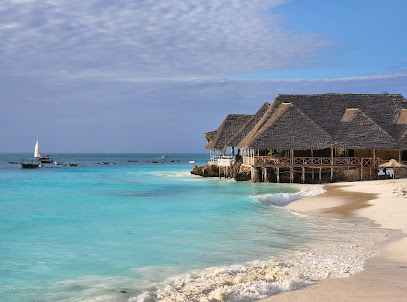
6 Degrees South
Experience the vibrant flavors of Zanzibar at 6 Degrees South - a culinary haven in Stone Town offering fresh local cuisine and breathtaking waterfront views.

Beach House Zanzibar
Discover the perfect blend of local Zanzibari flavors and international cuisine at Beach House Zanzibar - your ultimate dining destination in Stone Town.

Da Luigi Ristorante - Pizzeria
Discover authentic Mediterranean flavors at Da Luigi Ristorante - Pizzeria in Zanzibar's vibrant Stone Town.

The Silk Route
Experience authentic Indian cuisine at The Silk Route in Zanzibar's vibrant Stone Town—where tradition meets flavor.

Archipelago Waterfront Zanzibar
Discover exquisite local and international cuisine at Archipelago Waterfront Zanzibar while enjoying stunning views of Stone Town's waterfront.

Livingstone Beach Restaurant
Experience authentic Zanzibari cuisine with breathtaking ocean views at Livingstone Beach Restaurant in Stone Town.

Masa Japanese Restaurant
Experience exquisite Japanese dining at Masa Japanese Restaurant in Stone Town, where authentic flavors meet stunning views.

Secret Garden
Discover culinary bliss at Secret Garden in Stone Town, Zanzibar - where local flavors meet serene surroundings in an enchanting atmosphere.
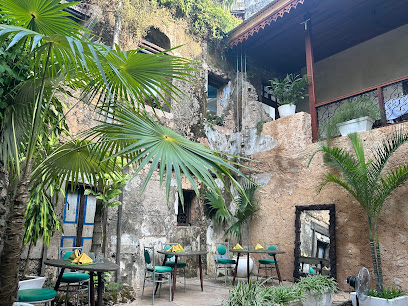
Pompetti Restaurant of Zanzibar
Discover the taste of Italy in Zanzibar at Pompetti Restaurant - where every dish tells a story.

Abyssinian Maritim Ethiopian Traditional Restaurant
Experience authentic Ethiopian cuisine at Abyssinian Maritim Restaurant in Stone Town, Zanzibar - where tradition meets flavor.

The Passing Show Restaurant
Experience authentic Tanzanian cuisine at The Passing Show Restaurant in Stone Town - where every dish tells a story of flavor.

Lazuli Cafe
Discover the vibrant flavors of Zanzibar at Lazuli Cafe – where local culture meets delicious cuisine in Stone Town.

Markets, malls and hidden boutiques
Memories Of Zanzibar
Explore the vibrant culture of Zanzibar at Memories of Zanzibar, your destination for unique souvenirs and handcrafted treasures.

The Zanzibar Curio Shop
Explore the vibrant world of The Zanzibar Curio Shop, where authentic antiques and handcrafted treasures await every curious traveler.

aromas of zanzibar
Discover the vibrant aromas and rich heritage of Zanzibar at Aromas of Zanzibar, the ultimate destination for authentic souvenirs.
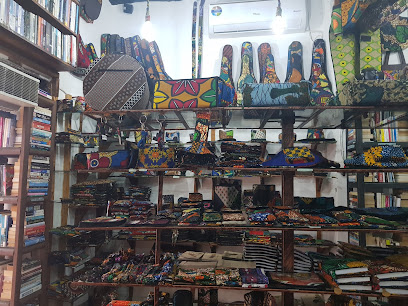
KITABWALLA BAGS, STATIONARY & TOYS SHOP.
Explore a unique selection of bags, stationery, and toys at Kitabwalla - a charming gift shop in Zanzibar's historic Stone Town.

The Coins Shop
Discover unique artistic handicrafts and jewelry at The Coins Shop, a gem in Zanzibar's vibrant Stone Town.

Kimondo Shop
Discover authentic Zanzibari souvenirs and crafts at Kimondo Shop in Paje, a vibrant treasure trove celebrating local culture.

Zivansh Concept Store
Explore Zivansh Concept Store in Zanzibar for unique gifts, stylish clothing, and authentic local crafts that capture the island's vibrant culture.

Gem Centre
Explore the Gem Centre in Zanzibar for exquisite handcrafted jewelry that captures the essence of the island’s rich culture and vibrant history.

Monica Boutique
Explore Monica Boutique in Zanzibar for unique clothing and accessories that embody the island's vibrant culture and craftsmanship.

Kumi Gifts & Treats
Explore Kumi Gifts & Treats in Stone Town, Zanzibar – your go-to destination for unique local crafts, gifts, and delicious treats.

Doreen Mashika
Discover unique fashion pieces and accessories at Doreen Mashika in Stone Town, Zanzibar, where local artistry meets contemporary style.
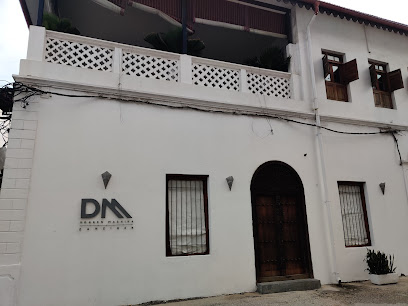
East Africa Merchants Co.
Explore East Africa Merchants Co. in Zanzibar: A treasure trove of jewelry, arts, and authentic local goods in the heart of Stone Town.

Om Namah Shivai Gift and Souvenir
Discover unique gifts and authentic souvenirs at Om Namah Shivai in Stone Town, Zanzibar, showcasing the island's rich culture and craftsmanship.

Abelle Boutique Zanzibar
Explore Abelle Boutique Zanzibar for chic beachwear and accessories in the heart of Stone Town, perfect for your tropical getaway.

The Gallery Curio Shop
Explore the vibrant craftsmanship of Zanzibar at The Gallery Curio Shop, where unique treasures and local artistry come together in Stone Town.

Essential bars & hidden hideouts
Mercury's Bar
Discover the lively atmosphere and delicious flavors at Mercury's Bar in the heart of Zanzibar's historic Stone Town.

Olive's Zanzibar
Discover the vibrant atmosphere and tropical delights at Olive's Zanzibar, the perfect bar for relaxation and enjoyment in paradise.

LOST SOLES Bar - Garden Beach Bungalows, Zanzibar
Discover the flavors of Zanzibar at Lost Soles Bar, where exquisite dining and breathtaking views meet for an unforgettable experience.

Kajibange BAR & Guest House
Experience the vibrant culture and stunning views at Kajibange BAR & Guest House, a perfect retreat on Zanzibar's north coast.

Bahari Bar
Experience the vibrant nightlife at Bahari Bar in Zanzibar's Hotel Riu Jambo, where refreshing cocktails and stunning ocean views await.

CHE Rock Bar & Restaurant
Discover Zanzibar's vibrant nightlife at CHE Rock Bar & Restaurant, where great food and live rock music create unforgettable memories.

Arnoldi´s on the Cliff - Bar & Bites
Discover Arnoldi's on the Cliff in Zanzibar, where stunning sunsets meet delicious bites and refreshing drinks in a vibrant atmosphere.

ZOMBIE BAR nyamkwi white art
Zombie Bar in Jambiani: Enjoy refreshing drinks, vibrant music, and a lively atmosphere on the shores of Zanzibar.
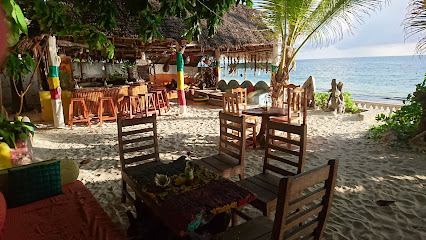
Vivi Café
Discover the vibrant flavors of Zanzibar at Vivi Café, a grill haven in the heart of Stone Town with stunning views and delectable dishes.

Masahani bar
Discover the vibrant atmosphere of Masahani Bar in the heart of Stone Town, where exotic cocktails and stunning ocean views await.

JETTY BAR
Discover the perfect blend of relaxation and local culture at Jetty Bar in Marumbi, where stunning views and vibrant atmosphere await you.

Living Room at Park Hyatt Zanzibar
Experience the elegance of the Living Room at Park Hyatt Zanzibar, where local flavors meet international cuisine in a stunning Stone Town setting.

Floating Bar
Discover the charm of Zanzibar at the Floating Bar, where stunning ocean views and refreshing drinks create the perfect tropical getaway.

Sai bar
Discover the vibrant atmosphere of Sai Bar in Zanzibar, where tropical cocktails and local flavors meet island hospitality.

New Cave Pub
Discover the vibrant nightlife and refreshing drinks at New Cave Pub, a must-visit destination on Fuju Beach Road, Zanzibar.

Local Phrases about Zanzibar Island
-
- HelloJambo
[jahm-boh] - GoodbyeKwaheri
[kwah-heh-ree] - YesNdio
[n-dee-oh] - NoHapana
[hah-pah-nah] - Please/You're welcomeTafadhali
[tah-fah-dah-lee] - Thank youAsante
[ah-sahn-teh] - Excuse me/SorrySamahani
[sah-mah-hah-nee] - How are you?Habari yako?
[hah-bah-ree yah-koh] - Fine. And you?Salama. Na wewe?
[sah-lah-mah. nah weh-weh] - Do you speak English?Unasema Kiingereza?
[oo-nah-seh-mah kee-een-geh-reh-zah] - I don't understandSieelewi
[see-eh-leh-wee]
- HelloJambo
-
- I'd like to see the menu, pleaseNataka kuona menyu, tafadhali
[nah-tah-kah kwoh-nah meh-nyoo, tah-fah-dah-lee] - I don't eat meatSili nyama
[see-lee nyah-mah] - Cheers!Mambo!
[mahm-boh] - I would like to pay, pleaseNataka kulipa, tafadhali
[nah-tah-kah koo-lee-pah, tah-fah-dah-lee]
- I'd like to see the menu, pleaseNataka kuona menyu, tafadhali
-
- Help!Msaada!
[msah-ah-dah] - Go away!Nenda zako!
[nen-dah zah-koh] - Call the Police!Piga polisi!
[pee-gah poh-lee-see] - Call a doctor!Piga daktari!
[pee-gah dahk-tah-ree] - I'm lostNimepotea
[nee-meh-poh-teh-ah] - I'm illMimi ni mgonjwa
[mee-mee nee m-gohn-jwah]
- Help!Msaada!
-
- I'd like to buy...Nataka kununua...
[nah-tah-kah koo-noo-noo-ah...] - I'm just lookingNinatazama tu
[nee-nah-tah-zah-mah too] - How much is it?Bei ni kiasi gani?
[beh-ee nee kee-ah-see gah-nee] - That's too expensiveHicho ni ghali sana
[hee-choh nee gah-lee sah-nah] - Can you lower the price?Unaweza kushusha bei?
[oo-nah-weh-zah koo-shoo-shah beh-ee]
- I'd like to buy...Nataka kununua...
-
- What time is it?Saa ngapi?
[sah-ah ngah-pee] - It's one o'clockNi saa moja
[nee sah-ah moh-jah] - Half past (10)Nusu kumi
[noo-soo koo-mee] - MorningAsubuhi
[ah-soo-boo-hee] - AfternoonMchana
[m-chah-nah] - EveningJioni
[joh-nee] - YesterdayJana
[jah-nah] - TodayLeo
[leh-oh] - TomorrowKesho
[keh-shoh] - 1Moja
[moh-jah] - 2Mbili
[m-bee-lee] - 3Tatu
[tah-too] - 4Nne
[n-neh] - 5Tano
[tah-noh] - 6Sita
[see-tah] - 7Saba
[sah-bah] - 8Nane
[nah-neh] - 9Tisa
[tee-sah] - 10Kumi
[koo-mee]
- What time is it?Saa ngapi?
-
- Where's a/the...?Iko wapi...?
[ee-koh wah-pee] - What's the address?Anuani ni ipi?
[ah-noo-ah-nee nee ee-pee] - Can you show me (on the map)?Unaweza kunionyesha (kwenye ramani)?
[oo-nah-weh-zah koo-nee-oh-nyeh-shah (kweh-neh rah-mah-nee)] - When's the next (bus)?Basi lijalo ni saa ngapi?
[bah-see lee-jah-loh nee sah-ah ngah-pee] - A ticket (to ....)Tiketi (kwenda ....)
[tee-keh-tee (kwen-dah)]
- Where's a/the...?Iko wapi...?
History of Zanzibar Island
-
Zanzibar Island’s history dates back to the first millennium AD. The island was originally inhabited by Bantu-speaking Africans. By the 8th century, Arab and Persian traders began to settle in Zanzibar, drawn by the island’s strategic location along the Indian Ocean trade routes. These early settlers laid the groundwork for Zanzibar’s rich cultural tapestry, interweaving African, Arab, and Persian influences.
-
The 15th century marked the arrival of European explorers. In 1498, Portuguese explorer Vasco da Gama was the first European to reach Zanzibar, ushering in an era of Portuguese dominance over the island. The Portuguese established a fort in Stone Town, which became a key point for their trade networks in the Indian Ocean. However, their control was short-lived, as Omani Arabs began to contest Portuguese influence in the region.
-
By the late 17th century, the Omani Sultanate had expelled the Portuguese and taken control of Zanzibar. The island blossomed under Omani rule, becoming a central hub for the East African slave trade. Stone Town, Zanzibar’s historic center, thrived as a bustling market where slaves were traded alongside spices and ivory. This period saw the construction of many of Stone Town’s iconic buildings, including the Sultan’s Palace and the Old Fort.
-
In the late 19th century, Zanzibar came under British influence. In 1890, the Heligoland-Zanzibar Treaty formalized British control, turning Zanzibar into a British protectorate. This period saw efforts to abolish the slave trade, improve infrastructure, and modernize the island’s economy. The British influence is still evident in the architectural and cultural landscape of Stone Town.
-
A pivotal moment in Zanzibar’s history occurred on January 12, 1964, when the Zanzibar Revolution overthrew the Sultanate. Led by John Okello, the revolution resulted in the establishment of the People’s Republic of Zanzibar. This period was marked by significant social and political upheaval, as the new government sought to dismantle the remnants of colonial rule and establish a socialist state.
-
In April 1964, just a few months after the revolution, Zanzibar merged with Tanganyika to form the United Republic of Tanzania. This union significantly shaped the political landscape of the region, integrating Zanzibar into the broader national framework while allowing it to retain a degree of autonomy. The island’s unique cultural and historical identity continues to contribute to Tanzania’s diverse heritage.
-
In 2000, Stone Town was designated a UNESCO World Heritage Site, recognizing its historical and cultural significance. The town’s narrow alleys, bustling bazaars, and historic buildings reflect a unique blend of Arab, Persian, Indian, and European influences. Today, Stone Town stands as a living museum, offering a glimpse into Zanzibar’s storied past and vibrant culture.
Zanzibar Island Essentials
-
Zanzibar Island can be reached by air or sea. The main entry point is Abeid Amani Karume International Airport (ZNZ), which is well connected with major airlines from Europe, the Middle East, and other parts of Africa. There are also frequent flights from Dar es Salaam and other Tanzanian cities. Alternatively, you can take a ferry from Dar es Salaam to Zanzibar, with several operators offering daily services. The ferry ride typically takes around 2-3 hours.
-
Transportation within Zanzibar is diverse. For short distances within Stone Town, walking is often the best option. For longer distances, you can use dala-dalas (local minibuses), taxis, or rental cars. Dala-dalas are the most economical but can be crowded. Taxis are more comfortable but ensure you agree on a fare beforehand. Renting a car or scooter is also popular, but be aware that driving is on the left side of the road.
-
The official currency in Zanzibar is the Tanzanian Shilling (TZS). While major hotels and some restaurants accept credit cards, many smaller establishments and local markets operate on a cash-only basis. ATMs are available in Stone Town and other major towns, but it is advisable to carry enough cash, especially when traveling to remote areas. US Dollars are also widely accepted.
-
Zanzibar is generally safe for tourists, but standard precautions should be taken. Petty theft, such as pickpocketing, can occur in crowded areas like markets and Stone Town. Avoid walking alone at night, especially in less populated areas. Some neighborhoods in Stone Town, such as Darajani Market, can be busy and chaotic, requiring extra vigilance. Always keep your belongings secure and be cautious when using ATMs.
-
In case of emergency, dial 112 for police assistance or 115 for medical emergencies. Major hospitals like Mnazi Mmoja Hospital in Stone Town offer medical services. Pharmacies are available for minor health issues. It is highly recommended to have travel insurance that covers medical emergencies. For lost or stolen items, contact the local police station in Stone Town for assistance.
-
Fashion: Do dress modestly, especially when visiting local villages and religious sites. Avoid wearing revealing clothing. Religion: Do respect local customs and traditions, especially during the holy month of Ramadan. Public Transport: Do use dala-dalas for an authentic experience, but be prepared for crowded conditions. Don’t carry large sums of cash on public transport. Greetings: Do greet people with a handshake and a smile. Using ‘Jambo’ (Hello) is always appreciated. Eating & Drinking: Do try local dishes like biryani and seafood. Don’t eat with your left hand, as it is considered impolite.
-
To experience Zanzibar like a local, visit the Darajani Market in Stone Town for fresh produce and spices. Engage with local fishermen at the Forodhani Gardens night market for fresh seafood. Explore the lesser-known beaches on the east coast for a more tranquil experience. Participate in a spice tour to understand the island’s rich history in the spice trade. Don’t miss the opportunity to learn Swahili phrases, as locals appreciate the effort.
Trending Landmarks in Zanzibar Island
Nearby Cities to Zanzibar Island
-
Things To Do in Stone Town
-
Things To Do in Dar es Salaam
-
Things To Do in Tanga
-
Things To Do in Morogoro
-
Things To Do in Diani Beach
-
Things To Do in Mombasa
-
Things To Do in Malindi
-
Things To Do in Moshi
-
Things To Do in Dodoma
-
Things To Do in Arusha
-
Things To Do in Iringa
-
Things To Do in Lamu
-
Things To Do in Singida
-
Things To Do in Nairobi
-
Things To Do in Naivasha













